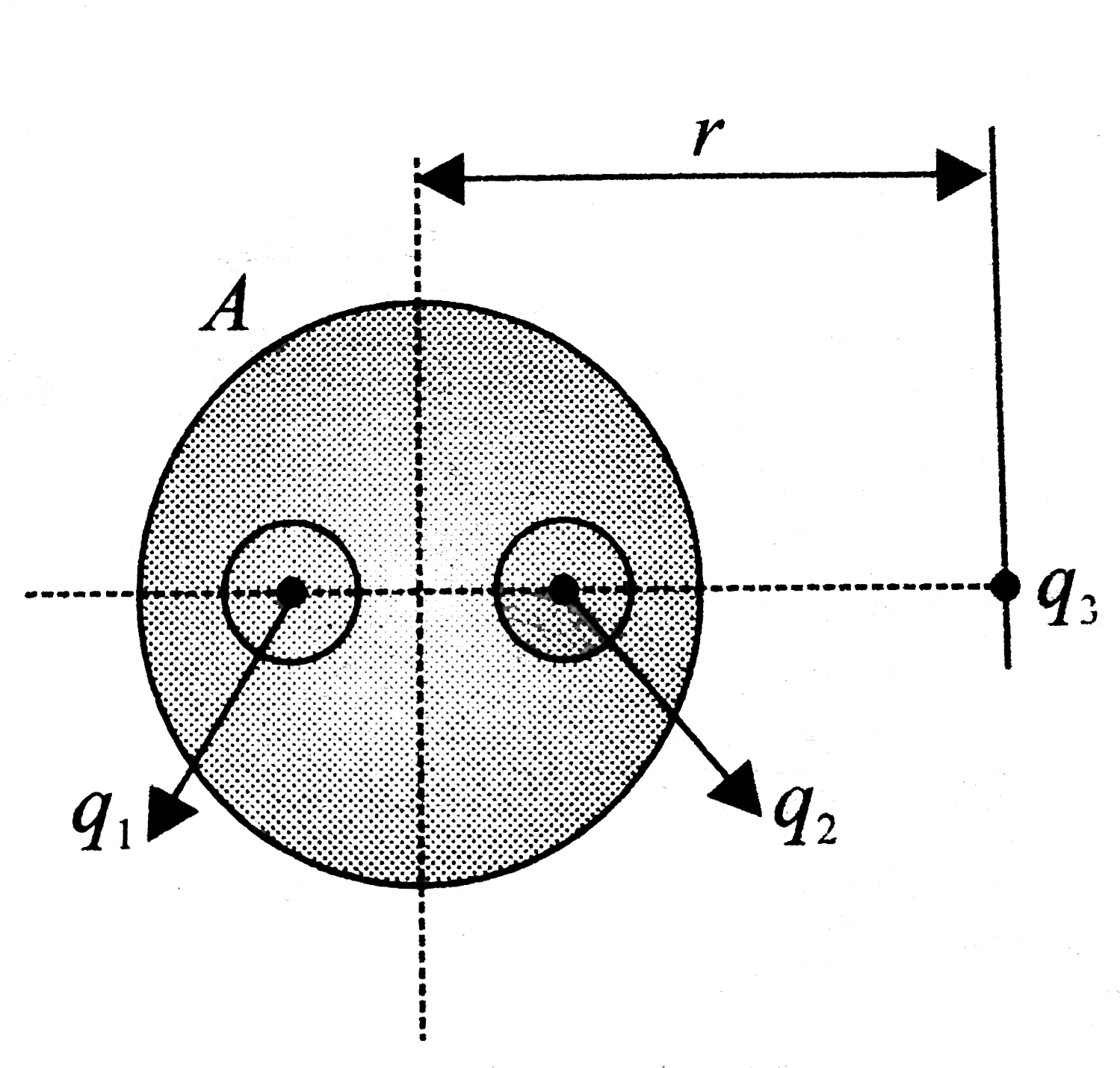A spherical conductor is placed near another positively charged conductor. The net charge acquired by spherical conductor will be
Either postive or negative
Positive only
Negative only
Zero
The correct Answer is:D
To solve the problem of determining the net charge acquired by a spherical conductor placed near a positively charged conductor, we can follow these steps:
1. Understanding the Setup:
- We have two conductors: one is a positively charged conductor, and the other is a neutral spherical conductor placed nearby.
2. Induction Process:
- When the positively charged conductor is brought near the neutral spherical conductor, the electric field created by the positive charge will influence the charges within the spherical conductor.
- The positive charge on the nearby conductor will attract the negative charges (electrons) within the spherical conductor towards its surface that is closest to the positively charged conductor.
3. Charge Redistribution:
- As a result of this attraction, the side of the spherical conductor closest to the positively charged conductor will acquire a negative charge due to the accumulation of electrons.
- Conversely, the side of the spherical conductor that is farthest from the positively charged conductor will have a deficiency of electrons, resulting in a net positive charge on that side.
4. Net Charge Calculation:
- The total amount of induced negative charge on the near side of the spherical conductor will equal the total amount of induced positive charge on the far side.
- Since the spherical conductor was initially neutral, the induced charges will balance each other out.
5. Conclusion:
- Therefore, the net charge acquired by the spherical conductor will be zero. The induced charges do not change the overall neutrality of the conductor.
Final Answer:
The net charge acquired by the spherical conductor will be zero.
---
- We have two conductors: one is a positively charged conductor, and the other is a neutral spherical conductor placed nearby.
- When the positively charged conductor is brought near the neutral spherical conductor, the electric field created by the positive charge will influence the charges within the spherical conductor.
- The positive charge on the nearby conductor will attract the negative charges (electrons) within the spherical conductor towards its surface that is closest to the positively charged conductor.
- As a result of this attraction, the side of the spherical conductor closest to the positively charged conductor will acquire a negative charge due to the accumulation of electrons.
- Conversely, the side of the spherical conductor that is farthest from the positively charged conductor will have a deficiency of electrons, resulting in a net positive charge on that side.
- The total amount of induced negative charge on the near side of the spherical conductor will equal the total amount of induced positive charge on the far side.
- Since the spherical conductor was initially neutral, the induced charges will balance each other out.
- Therefore, the net charge acquired by the spherical conductor will be zero. The induced charges do not change the overall neutrality of the conductor.
The net charge acquired by the spherical conductor will be zero.
Topper's Solved these Questions
Similar Questions
The capacity of a spherical conductor is
View SolutionAn uncharged conductor A is brought near a positively charged conductor B. The size of the conductor A is much greater than the size of conductor B. Then,
View SolutionA number of spherical conductors of different radii are charged to same potential. The surface charge density of each conductor is related with its radius as
View SolutionAssetrion: Net electric field insider conductor is zero
Reason: Total positive charge equals to total negative charge in a conductor
View SolutionAcross the surface of a charged conductor, the electric
View SolutionProve that, if an insulated, uncharged conductor is placed near a charged conductor and no other conductors are present, the uncharged body must be intermediate in potential between that of the charged body and that of infinity.
View Solution
A small spherical conductor 'A' of radias 'a' is initially charged to a potential 'V' and then placed inside an uncharged spherical conducting shell 'B' of radius 6a as shown. The potential of the spherical conductor 'A' after closing the switch S is
View SolutionA spherical conductor A contains two spherical cavities as shown in Fig.2.127. The total charge on conductor itself is zero . However , there is a point charge q1 at the center of one cavity and q2 at the center of the other cavity . Another charge q3 is placed at a large distance r from the center of the spherical conductor.

The force acting on conductor A will be
View SolutionA metallic sphere having no net charge is placed near a finite metal plate carrying a positive charge. The electric force on the sphere will be
View SolutionA metallic partical having no net charge is placed near a finite metal plate carrying a positive charge. The electric force on the particale will be
View Solution